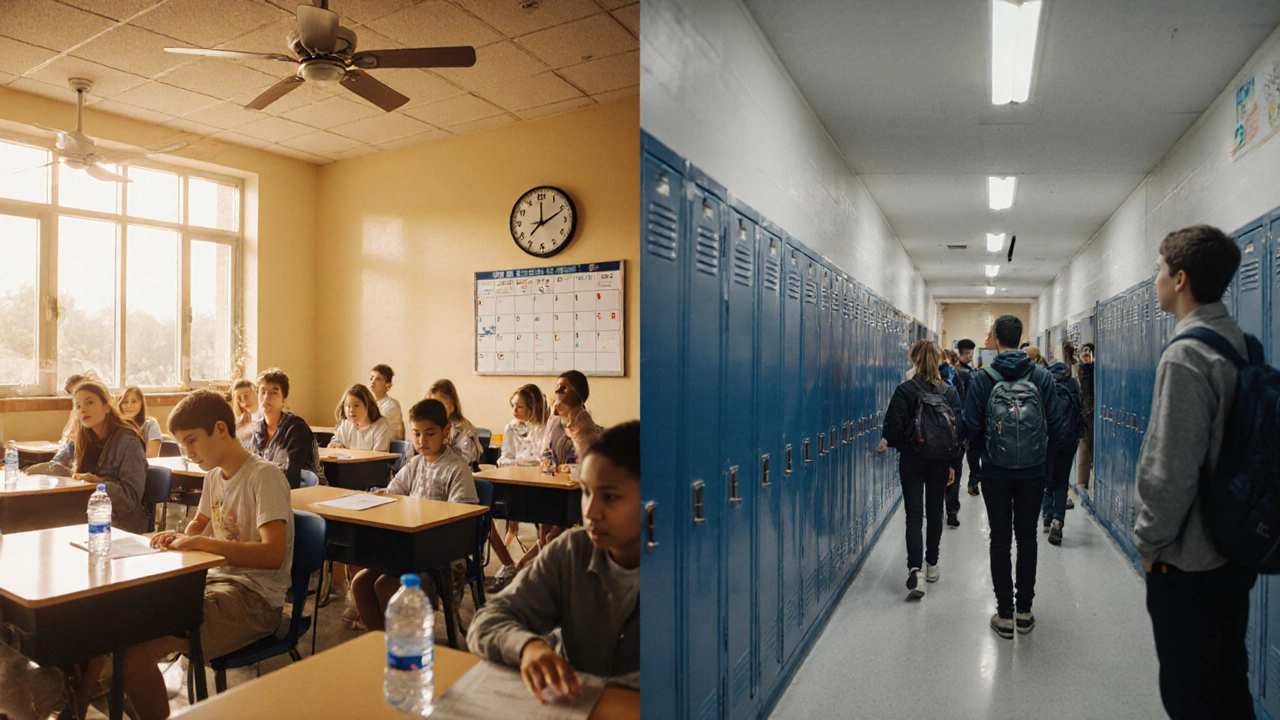Regular School: What It Means and Why It Still Matters
When talking about regular school, a traditional, publicly or privately funded institution where children attend classes in a shared physical space under the guidance of certified teachers. Also known as mainstream school, it forms the backbone of most education systems worldwide. At its core, a regular school delivers structured curriculum, social interaction, and access to specialist facilities. Regular school requires qualified teachers, standardized assessments, and a schedule that aligns with local regulations.
Meanwhile, homeschooling, an alternative where parents take direct responsibility for teaching at home offers flexibility but often lacks the daily peer contact found in regular schools. Parents who choose homeschooling must create their own lesson plans and find social outlets beyond the home. This contrast highlights a key semantic triple: homeschooling provides an alternative to regular school.
Another major piece of the puzzle is online learning, digital courses that can be taken anywhere with an internet connection. While online learning can supplement a regular school’s curriculum, it also serves as a stand‑alone option for families seeking flexibility. In practice, online learning complements regular school education by offering extra resources, enrichment programs, and sometimes full‑time virtual classrooms.
How Learning Styles Shape the Regular School Experience
Understanding learning styles, the preferred ways individuals process information, such as visual, auditory, or kinesthetic is crucial for teachers in a regular school setting. When instruction aligns with a student’s dominant style, engagement and retention improve. This creates the semantic link: learning styles influence regular school outcomes. Schools that apply multimodal approaches—mixing lectures, hands‑on activities, and visual aids—tend to see higher achievement across diverse learners.
Practical examples include using colour‑coded worksheets for visual learners, group discussions for auditory learners, and science labs for kinesthetic learners. By diversifying teaching methods, a regular school can address the varied needs of its student body without resorting to one‑size‑fits‑all curricula.
Exam pressure is another reality in regular schools, especially when students face national standards like the GCSE, the General Certificate of Secondary Education in England, Wales and Northern Ireland. The GCSE shapes curriculum pacing, assessment frequency, and teacher workload. Understanding the GCSE framework helps schools plan effective revision schedules and allocate resources where they matter most.
Regular schools typically structure revision time based on research‑backed guidelines—e.g., three to four hours of focused study per day in the weeks leading up to exams. When teachers integrate active recall, spaced repetition, and practice tests, students develop stronger memory traces, which aligns with the semantic triple: regular school requires qualified teachers.
Beyond academics, regular schools foster social skills through daily interactions. Playgrounds, group projects, and extracurricular clubs teach teamwork, empathy, and conflict resolution—skills harder to cultivate in isolation. These social experiences often translate into better emotional intelligence, which employers value later in life.
In contrast, families that rely solely on homeschooling or online learning must seek external clubs, sports teams, or community groups to fill the social gap. While possible, it demands extra planning and resources.
Technology also reshapes the regular school landscape. Interactive whiteboards, learning management systems, and tablet‑based assignments blend traditional teaching with digital tools. When used wisely, technology enhances engagement without replacing the human element that defines a regular school.
Finally, the decision between regular school, homeschooling, or online learning isn’t binary. Many families adopt a hybrid model—attending a regular school for core subjects while supplementing with online courses or home‑based projects. This flexible approach leverages the strengths of each system, offering a tailored education that fits the child’s needs and family circumstances.
Below you’ll find a curated collection of articles that dive deeper into each of these topics—from the biggest drawbacks of homeschooling to the most effective learning styles, GCSE revision tactics, and the rise of online versus distance learning. Explore the insights, compare the options, and discover practical steps you can take right now to support your child’s educational journey.
Is Summer School Harder Than Regular School? A Practical Comparison
Explore whether summer school is tougher than a regular school year. Compare curriculum intensity, schedules, assessments, and get practical tips to succeed.
